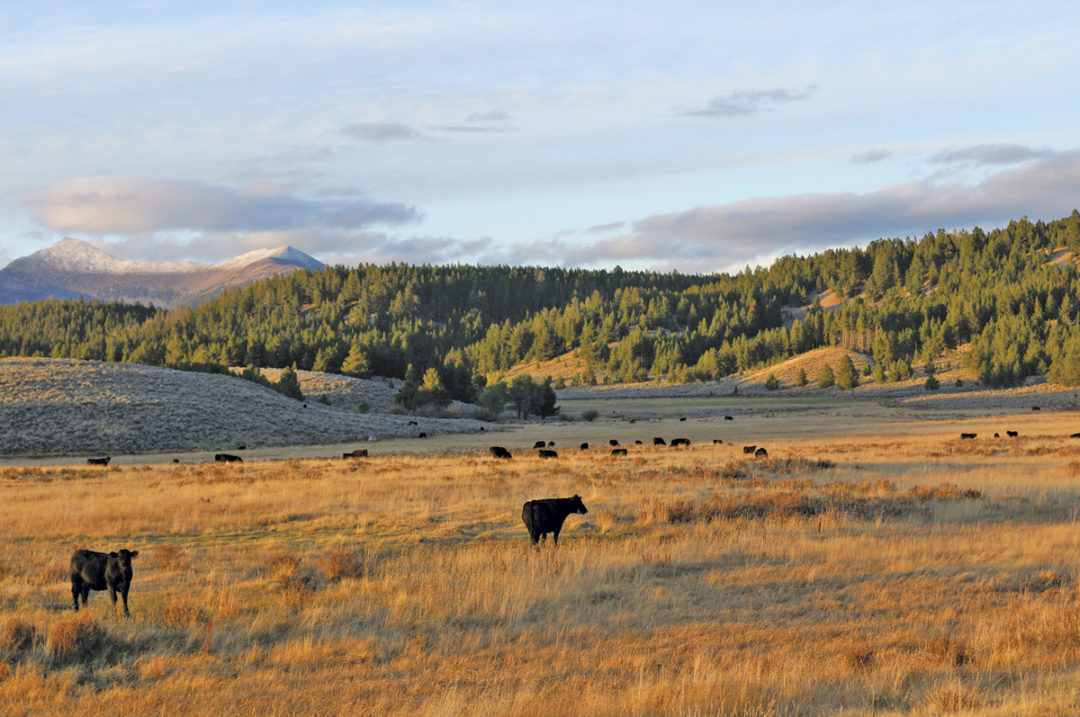Hot, dry months are a critical period for vegetation, making this season one of the most difficult for managing grazing animals. When it is hot, cattle tend to make things even more difficult by congregating in shaded, cooler areas, namely wet meadows and riparian areas. Encouraging animals to disperse and utilize the full range can be a pain this time of year, but necessary for the health of the range plants. Another goal should be to maintain forage productivity for livestock year after year, so it is important to take the time to keep an eye on vegetation and adjust management strategies as needed. The following are a few considerations for maintaining forage productivity for next year:
- Keep a close eye on utilization. Aim for light to moderate grazing utilization levels, especially during this time of year. Plants need at least some of their leaves to continue to grow and maintain their root systems. In the hot, dry periods of summer, it is important not to disturb the root base of the plants. Weakened root systems can lead to poor regrowth and decrease soil stability. Worst of all, stressed native perennial plants cannot readily combat invasive species.
- Allow for a regrowth period. If grazing a pasture in the hot, dry part of the season, be sure to pull livestock off in time to allow for a cool-season regrowth period.
- Focus attention on riparian areas. During times of hot, dry weather, livestock tend to congregate in the cool, shaded areas (such as riparian areas), often leading to overutilization in those areas. Practice strategies that increase livestock dispersal to address this concern.
With everything else that is going on this time of year, it can be challenging to spend that much time with your livestock on range. However, doing so can improve your rangeland forage production year after year. Use some of these strategies to improve pasture dispersal, which will in turn decrease the pressure that vegetation may experience:
- Strategic supplementation. Strategic supplement placement will encourage cattle to move away from water sources. Place supplements (protein, mineral, white salt) greater than a quarter of a mile from water and within 1 mile of each other. Move these sites around to minimize localized trampling. In the heat of the summer, the forages may not be providing the nutrients that your animals may require anyway, so make sure you are testing your forages for nutrient quality.
- Send out a rider. Regular pressure on the cattle will encourage them to disperse throughout the pasture and discourage congregation in sensitive areas.
- Provide off-stream water/increase water sources. Especially in pastures with steep slopes, providing more water opportunities will help decrease congregation and encourage livestock to use more of the pasture. Whenever possible, try to have water sources approximately 1 mile apart.
- Provide shade opportunities. Often adding off-stream water sources is not feasible, but in these cases, try to get creative and provide some off-stream shade to help decrease pressure in riparian areas.
- Apply short-duration, rotational grazing. When possible, graze for shorter durations during the hot, dry months. Doing so will decrease the pressure over the long term, and if the vegetation is healthy enough and allowed a period of rest, grazing more than once during the season may be possible.
- Rest sensitive locations. Some sensitive areas may benefit from being grazed earlier in the spring or later in the fall rather than during the hot season. This option may not be feasible, but where it is, get creative with your grazing management plan.
Reach out to those who can help with that creativity, such as your local or state university extension, NRCS, etc.








